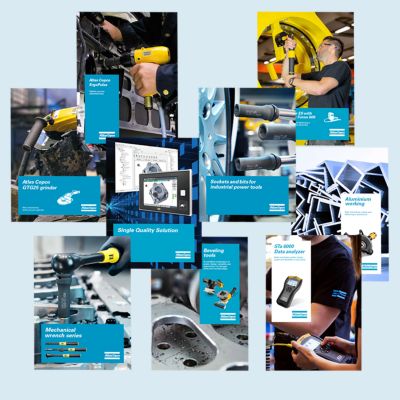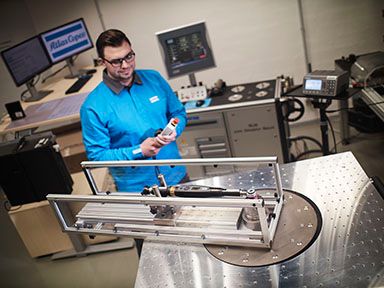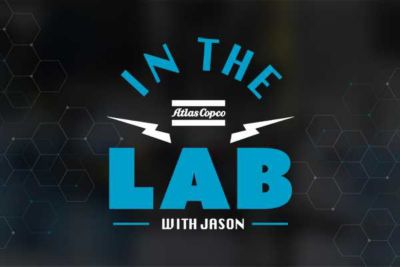Two-component (2K) applications of adhesives or thermal compound materials are gaining ground, particularly in the manufacturing of high-performance EV batteries. Temperature-sensitive cells must not be exposed to heat for curing, therefore 2K materials are used for most assembly steps. At the same time, battery designs are changing rapidly, which means that materials and processes are constantly evolving. What are the main challenges and success factors when designing and implementing applications?
Diverse processes – diverse challenges
With two-component applications, the curing process takes place through a chemical reaction when the materials are mixed and applied. This means that two different components must be conveyed, dosed, mixed, and applied precisely to meet the required pot life and quality. Viscosities, mixing ratios and flow rates can vary greatly depending on the application – from small-volume applications with uneven mixing ratios, for example when bonding battery cells, to large-volume gap filler or fire protection applications. At the same time, the materials are often abrasive or corrosive, which stresses the equipment – from the material pump to the nozzle.
Typical 2K processes in battery assembly
- Cell bonding
- Bonding of cooling ribbons
- Battery module bonding
- Thermal interface applications
- Fire protection coatings
- Top lid/cover sealing
Configuration of the dispensing equipment – flexibility is key
Therefore, there are no standards for the design of the dispensing system. The right configuration must be chosen depending on the individual process. Flexibility within the dispensing system is crucial. When it comes to the equipment, you should pay attention to this:
- Applicator technology: Mixing ratios can vary from 1:1 up to 100:1. Make sure that you can choose from different injection concepts. Different mixing valves can be required, e.g. parallel injection for similar ratios and central injection for unequal mixing ratios.
- Metering equipment: Opt for high-resolution metering units with a broad flow range to cover small-scale and large-scale applications. Separate, flow-controlled regulation of the two metering units ensure precise material dosing and maximum precision mixing despite different viscosities.
- Material supply: A broad pump portfolio for different barrel sizes and material properties (abrasive, corrosive, fillers, etc.) is a major advantage when it comes to ensuring a reliable supply of two component materials.
Mixer change – a tripping hazard
The chemical reaction begins as soon as the two components contact each other in the mixing valve. Static mixers are wearing parts and need to be replaced regularly because the material hardens inside. However, changing the mixer is a critical point as it interrupts production and is a potential source of errors. The mixers have tolerances and if they are not seated correctly, this can affect the application quality. Production efficiency, quality and operators all benefit from equipment that facilitates simple, tool-free mixer changes and compensates for tolerances.

Software – Process and quality under control
Precise and high-performing hardware is only half the battle. The curing process is key to application quality and must be controlled. Advanced and dedicated 2K software features are crucial for ensuring quality and a smooth production process. Here are some examples:
- The software can manage and time the purging of the equipment in production breaks according to the pot life to prevent unwanted curing of the material inside the system.
- The software can facilitate and adjust the individual pre-pressure, with which the adhesive is applied on the part. This is important to ensure the right mixing ratio despite different material viscosities. If the pre-pressure is not set correctly, this can lead to soft spots (delayed or no curing) or hard spots (premature curing) particularly at bead beginnings – and negative impact on the application quality.
- The software can support process monitoring: Immediate detection of the smallest process deviations helps to ensure quality, save material, and avoid scrap in series production. Features such as valve monitoring for metering units and applicators are useful tools.
Competence – Partner up for excellence
Two-component applications are among the most demanding applications in the field of bonding and dispensing. Expertise and experience are required here. In our global Innovation Centers, we bring our joining and technology experts together with car, battery, and material manufacturers. Together, we design the joining process, test mixing ratios and application patterns on real car or battery parts under real production conditions to ensure a smooth start to production. In this way, we put new processes through their paces, accelerate innovation and help our customers and partners gain a competitive edge.









